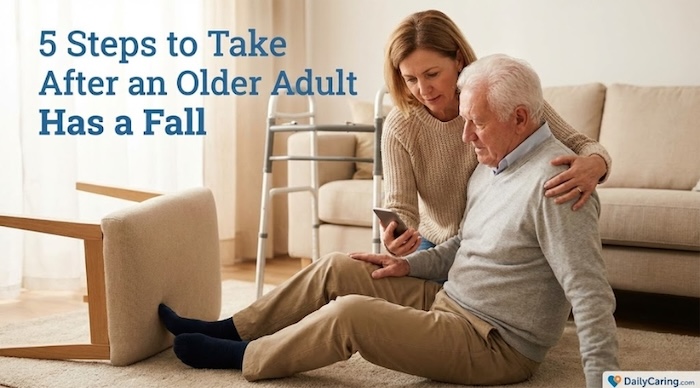Helping seniors stay independent can be challenging, especially if your older adult won’t consider a mobility device that can keep them safer and help them get around. California Mobility shares tips for talking about aging compassionately, along with three standard mobility devices that improve safety and ease.
Seniors often need help with mobility, and mobility devices such as canes or walkers can help them stay safer and more independent for longer.

This is a serious issue because, according to the National Council on Aging, falls are the leading cause of injuries among older adults. Researchers predict that older adults will have seven deadly falls every hour by 2030.
As a caregiver, ensuring your older adult receives the care and support they need to stay safe can be challenging when they resist making helpful changes.
We share why approaching aging with compassion is essential, three mobility devices that help seniors stay independent, and why it’s helpful to first check with their doctor and insurance plan.
Compassion is Essential for a Successful Conversation About Aging
Convincing someone to use a mobility device can be a challenge, but a little compassion and listening can go a long way.
When discussing mobility issues with older adults, it’s essential to realize that the fear of aging is very real. It can prevent a normally rational person from accepting the help they need.
Many older individuals fear losing their independence. Being told they need help can be a blow to their pride, so it’s essential to take a tactful, gentle approach.
Instead of openly confronting your older adult and demanding changes, arrange a heart-to-heart conversation in a calm, nonjudgmental setting.
Let them know that even though they may need help getting around, they’re still the same person they have always been.
3 Mobility Devices That Help Seniors Stay Independent
Safely aging in place is possible for many seniors. These three standard mobility devices can help seniors get around more easily and remain independent.
1. Canes and walkers
Canes and walkers are some of the most common mobility devices on the market.
They can make a world of difference for individuals suffering from lower-body pain, weakness, or balance problems.
Both help seniors to walk more safely and comfortably while maintaining a healthy posture.
Plus, there are many different types of canes and walkers to choose from.
2. Stairlifts
Going up and down the stairs multiple times a day can be difficult for many seniors – and for some, impossible.
If stairs are a challenge for your older adult, you might want to consider installing a stairlift in their home.
A stairlift is a chair that’s attached to a motorized rail. A person stays seated in the chair and it glides up and down the stairs on the rail. This allows someone to get up and down the steps with little to no effort.
Stairlifts can be installed on both straight and curved staircases and they can usually be customized to match the décor of the house.
3. Power wheelchairs
A power wheelchair allows someone with lower-body weakness or paralysis to get around easily and quickly.
Unlike the heavy, chrome-plated, difficult-to-manage contraptions of the past, most new power wheelchairs are lighter and more attractive.
Check with Both Doctors and the Insurance Plan for Coverage
Before choosing a mobility device, first consult your older adult’s doctor and review their health insurance plan.
The doctor can recommend the mobility device most suitable for an older adult, helping you make a more informed decision.
And Medicare Part B and Medicaid often pay for mobility devices if they’re “prescribed” with a doctor’s order.
Final Thoughts on Mobility Devices for Seniors
By exploring these mobility solutions (from simple canes to power wheelchairs), you are opening the door to greater safety and independence for your aging loved one. While the conversation may require empathy and patience, remember that the correct device is not a symbol of limitation, but a key to preserving autonomy and confidence.
Consulting a doctor is the essential first step to finding the perfect fit and navigating insurance coverage. The goal is not just to prevent falls, but to support a fuller, more engaged life. Taking this step empowers them to continue enjoying the activities and spaces they love, safeguarding their well-being for years to come.
Recommended for you:
- Increase Safety with a Simple At-Home Mobility Test: Timed Up and Go
- Prevent Falls with 5 Warning Signs of Mobility Issues in Seniors
- How To Use a Walker Safely and Comfortably
Guest contributor: Joseph Jones has been writing senior care and aging-related articles for years. He got his start writing for a personal blog before being offered a role at California Mobility as Content Marketing Manager, where he created highly informative guides and health awareness articles for aging adults. He’s currently contributing to a variety of blogs in the industry in hopes of spreading information about taking care of seniors and what to expect in the aging process.
About the Author

Connie is the founder of DailyCaring.com and was a hands-on caregiver for her grandmother for 20 years. (Grandma made it to 101 years old!) She knows how challenging, overwhelming, and all-consuming caring for an older adult can be. She also understands the importance of support, especially in the form of practical solutions, valuable resources, and self-care tips.












